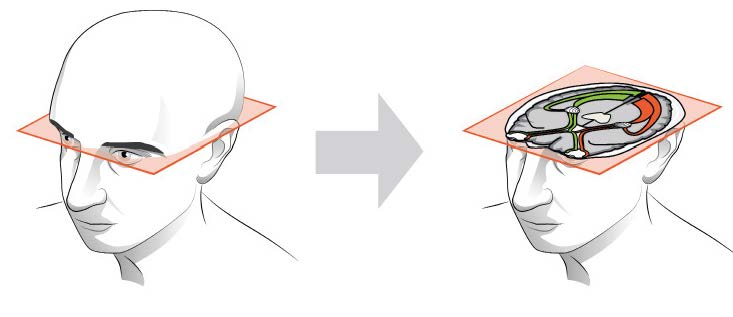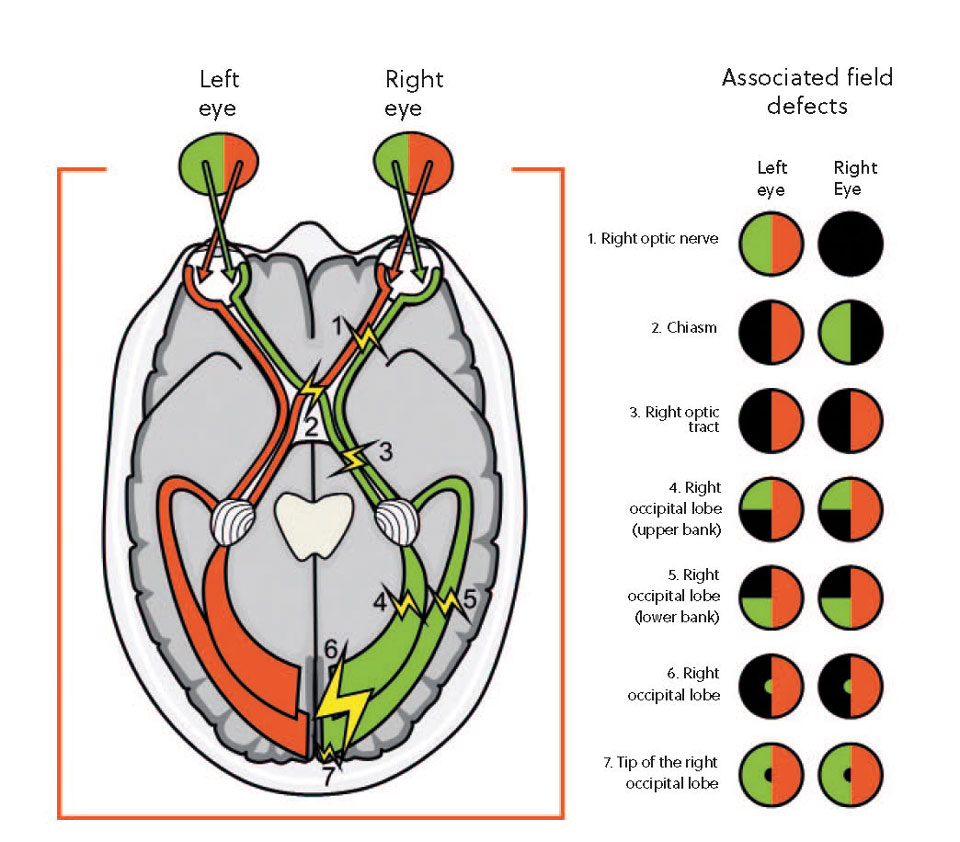- OT
- CPD and education
- The visual pathway
The visual pathway
Dr Samantha Strong shares a journey through the visual pathway

02 March 2020
In order for us to ‘see’ the visual world around us, the light signal needs to travel from the eye to the brain. Let’s say we’re looking at an apple; in order to perceive the shape, colour, and all visual features of the apple, the light coming off it needs to travel through the pupil to the back of the eye, and then journey along the visual pathway. The area of space that we are viewing at any one time is called our ‘visual field.’
One important feature of the visual pathway is that it tries to preserve positional information of the visual field. To understand this more simply, we can liken it to moving a jigsaw. If you had just proudly completed a 1000-piece jigsaw puzzle on your kitchen table and wanted to move it to a different location, throwing it up into the air and hoping it will all fall back into place would be an inefficient and risky strategy; pieces may get lost and it would take time to put back together again. Instead, if you carefully moved the jigsaw as a whole and made sure that pieces remained adjacent in transit, then it would be much quicker and easier to view in its new location.
Figure 1

The visual system works using a similar principle with the entirety of the visual field being the complicated jigsaw. Parts of the visual field that fall adjacent to one another, for example, the words on this page, will be processed adjacent to each other along the visual pathway and in the brain itself.
This means that if a patient presents with a visual field defect (or scotoma), we can use what we know about the visual pathway and the positional preservation of the visual field to predict where problems along the pathway may be occurring.
If a patient presents with a visual field defect (or scotoma), we can use what we know about the visual pathway and the positional preservation of the visual field to predict where problems along the pathway may be occurring
In the visual pathway (Figure 1 and 2), lightning bolts are used to indicate the location of damage that would cause the example field defects shown alongside. In the figures, defects (blind spots) are shown as black shapes, and clear vision is represented as the appropriate colours for each eye. The eyes are shown individually because if a defect only affects one eye, or it affects both eyes differently, then it can be a further clue as to the location of the damage.
Figure 2

Other articles in this series
- In the field Optical assistant, Lisa Skelton, discusses carrying out visual field tests
- A perfect match How artificial intelligence is being applied to visual fields
- Understanding the test types Dr Lindsay Rountree introduces the most frequently used visual field tests in routine practice
- The patient and the visual field test Dr Lindsay Rountree discusses making the patient’s experience of visual field testing a positive one
- What the future holds Dr Laura Edwards and Dr Lindsay Rountree discuss their take on research into visual field
- Visual fields: the jargon OT explores the terms commonly used on a visual field plot
Advertisement

Comments (0)
You must be logged in to join the discussion. Log in